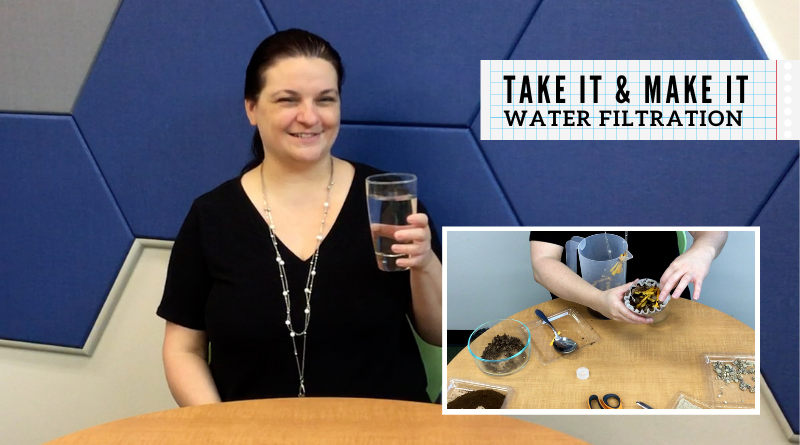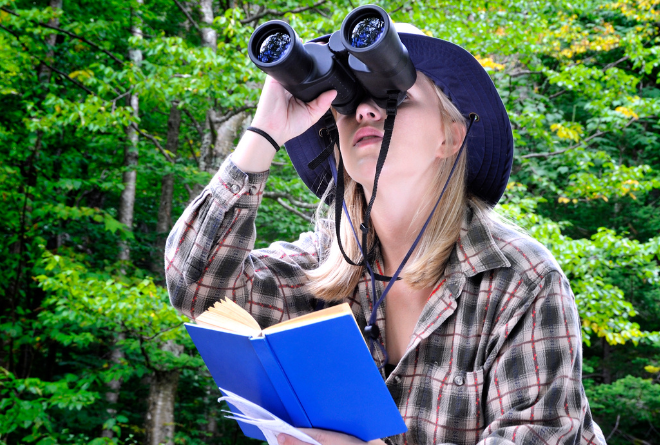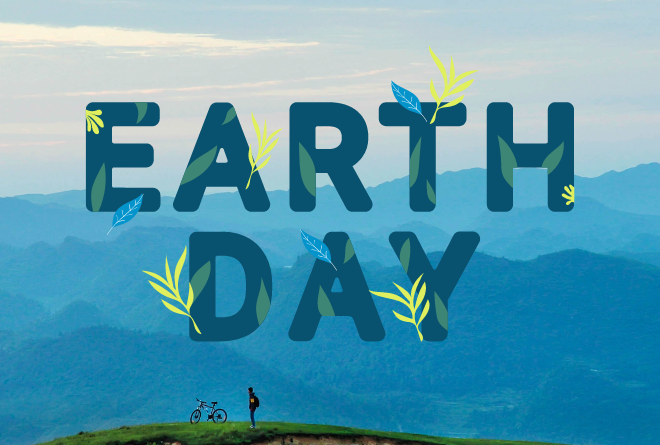
STEAM Connections: Water Filtration
Ever wonder where our clean water comes from? Let’s explore water filtration and find out!
Content Overview
Every day we use water to clean our dishes, clothes and hands, but where does our clean, drinkable water come from? The Earth is comprised of about 70% water, but only 1% of that water is available, fresh, and safe to drink. The water that comes out of our faucets originates from rivers, lakes, or water that has seeped underground, called groundwater.
Before we use this water to cook, drink or bathe, it needs to be treated first.
Some people have access to water from a public municipal water treatment system; others have a treatment system from a private well, or original water sources, such as a river or lake. Today we will focus on a step of the water treatment system that is commonly used. That step is called physical filtration. Physical filtration systems are important for cleaning larger particles out of water. Let’s take a look at what is involved in physical filtration and make a water filtration system of our own.
Hands-On Exploration
First, we have our feed water, which is our original, contaminated or “dirty” water that is full of debris. Debris is loose waste or trash. Now we need a filter. The filter is a porous medium, which means water can pass through it, but the solid debris pieces cannot. Some filters work better than others at removing debris. The filters we used are: sand, gravel, cotton balls, and coffee filters
Supplies

- Clear plastic drink bottle or funnel
- Plastic cup or bowl
- Coffee filter
- Gravel
- Sand
- Cotton balls
- Water
- Various debris that may include: cooking oil, bits of paper, plant matter, paper towels, used coffee grounds – anything you like!
Instructions
- Add debris to water – To simulate natural runoff and pollution, add various types of debris to your water, then set it aside to use later. We added things like cooking oil, bits of paper, plant matter, paper towels, used coffee grounds
- Make your funnel – make your funnel and filtrate bowl by cutting a plastic drink bottle or jug in half. Remove the lid from the top, and this will be your funnel
- Place your funnel in the bowl – Turn over the top of your bottle and place it inside the bottom half of the bottle
- Predict and record – Predict what each porous filter material might remove from the dirty water. Make sure you record your predictions on your scientific Observations sheet.
- Layer in your materials – After you make your predictions, layer your filter materials into the top half of the bottle or funnel.
- Pour the water – Gently pour the dirty “feed” water through the filter.
What does the filtered water look like? - Examine the layers – Take apart your filter and look at each of the layers.
Can you tell what each material filtered out of the water? - Record your findings – Record your findings on your scientific observations sheet.
Which debris is the most difficult to remove?
Which materials are better at filtering out different debris?
How will the information you discovered help you improve your filter next time?
Activity Discussion
We used the gravity filtration method, we added the feed water to the top of our system – and let gravity force all the water through the filter. The water that passed through the filter and came out the other side is called filtrate. You can experiment with different filters and debris to determine the most effective filtration. Remember, this is only one step in the water treatment process, so even though the filtrate water might look cleaner than before – I still wouldn’t drink it!
Continued Learning
What do you notice about the filtrate? When you take apart your filter, examine the layers. Which layer filtered out which type of debris? Try the experiment again, using other debris and testing different filter materials and amounts. Engineers across the world are always working on ways to improve water treatment and increase access to clean water. How can you improve your filtration system to make the water even cleaner?
Use the library catalog to learn more about water filtration!

Every Last Drop: Bringing Clean Water Home by Michelle Mulder
From Raindrop to Tap by Michael Bright
Keeping Water Clean by Helen Frost
Kids Can Keep Water Clean by Cecilia Minden
You Wouldn’t Want to Live Without Clean Water by Roger Canavan




